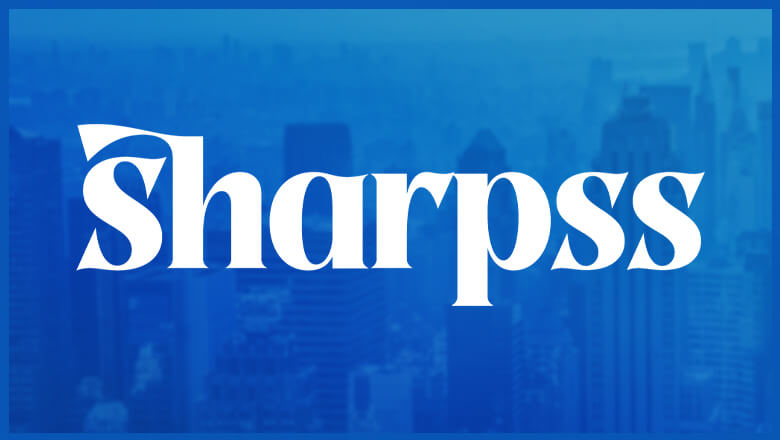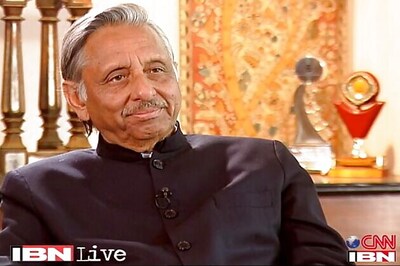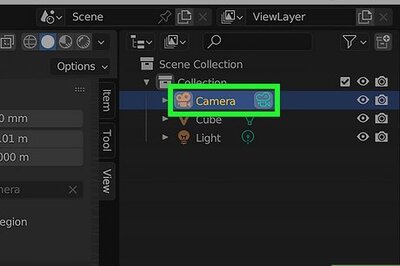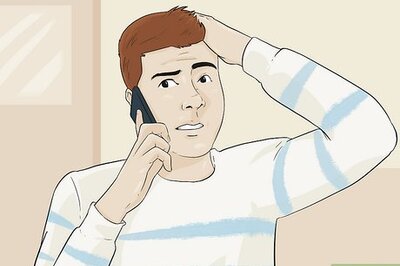
views
Alternative Ways to Say “Please Find Attached”
“Here is…” This phrase sounds a little more conversational, and keeps your email short and to the point. Example: Here is the first draft of the business plan that you asked for.
“I’ve attached…” If you want an alternative that fits in a casual or professional email, then “I’ve attached” is a perfect fit. Example: I’ve attached my resume so you can check my qualifications.
“I’m sharing…” Even though this sounds a little more casual, it works no matter what type of email you’re writing. Example: I’m sharing my demo reel so you can easily view examples of my work.
“Attached to this email…” Quickly flag that there are files at the end of the email with this quick and casual phrase. Example: Attached to this email are the product reports from the past month.
“Please see the enclosed…” This is a polite way to refer to your attachment and let the recipient know what you’ve sent them. Example: Please see the enclosed project outline for the information you need to get started.
“You’ll find the attachment below.” Simply guide the recipient to the bottom of the email so they don’t forget about the attachment later on. Example: Thanks for getting started on this project. You’ll find the notes that we discussed below.
“I’ve linked… Whether you’re including a file or a hyperlink to a larger attachment, this phrase works well in business or casual emails. Example: I have linked a few images to help generate more inspiration.
“I’m excited to share…” When you’ve been working on something that you’re eager to share, then express your enthusiasm to make the recipient excited for it too. Example: I’m excited to share my portfolio with you so you can see my artwork.
“Please take a look at the attached…” If you want to politely direct someone to the attachment, simply ask them to open and scroll through it. Example: Please take a look at the attached budget we’re proposing and check for errors.
“The attached file includes…” Instead of saying what file you attached, briefly mention its subject matter so the recipient knows what more to expect. Example: The attached video includes instructions for completing the process and troubleshooting tips you may run into.
“I’m attaching [x] to help you…” Rather than going into confusing details that could get lost in an email, let the recipient know that the information in the attachment will aid them. Example: I’m attaching an infographic that walks you through the steps to help you finish more easily.
“For reference, I’ve added…” When you want to get someone on the same page as you but don’t want a long email, then leave the full instructions in the attachment. Example: I know this project can be tricky. For your reference, I’ve added some example documents so you have an idea of what we’re looking for.
“Please let me know your thoughts on the attached…” If you’re looking for feedback or input on something you’re working on, address it right away in the body of the email. Example: Please let me know your thoughts on the attached artwork. If you have any critiques, I am eager to hear them.
“Kindly check the enclosed…” If you don’t want to explain instructions in your email, direct the recipient to the attachments. Example: Kindly check the enclosed start-up guide for the next steps and best practices.
“When you review the attached…” With this phrase, you can briefly summarize the info in your attachment and what feedback you’re looking for. Example: When you review the attached photos, let me know if you need any different angles or shots.
“I’ve attached the relevant information.” When your attachment has important info the recipient needs to read, let them know that there are more details in the files. Example: Thanks for taking on this new initiative. I’ve attached the relevant information to get you started.
“Please refer to the attachment.” If you’re emailing rules or a guide to a new project, or if you want to provide a visual reference, then try this phrase. Example: Please refer to the spreadsheet I attached to confirm the data.
“If you need more details, please look at…” If you’re passing on information about a difficult project or don’t want to get too detailed in the email’s body, then let the recipient know the attachment has everything they need. Example: Starting tomorrow, we’re rolling out a new review process. If you need more details, please look at the guidelines attached to this email.
“The [x] you requested are attached.” If someone specifically asked you for files, then try out this phrase so your email doesn’t sound as stiff. Example: Thank you for meeting with me. The documents you requested from me are attached below.
“Let me know if you have questions about…” If you’re sending a long or confusing attachment, don’t be afraid to keep the door open and encourage the other person to reach out. Example: Let me know if you have any questions about the article summaries I’ve attached, and I’ll respond as soon as possible.
“Please find enclosed…” This phrase works as a good direct replacement, but it may sound a little formal and stiff. Example: Please find enclosed my CV for your review.
“Attached herewith this email…” In the most formal settings, use proper language to sound professional. Because this phrase sounds a little antiquated, use it sparingly with others. Example: Attached herewith this email are the data and spreadsheets for the last quarter.
Attach the file with no explanation. If you’ve already discussed sending an attachment earlier in an email thread or in person, it’s okay if you don’t call it out in your email. Just greet the person in the body of your email and send the attachment. Example: Thanks for taking a look at these files for me. I’m looking forward to your feedback.
What does “please find attached” mean?
“Please find attached” means the message includes files or attachments. If you see this phrase in an email, then whoever sent it to you attached documents, pictures, or another important file for you to see. When someone says “please find attached” or a variation of it, they want to make sure you notice and view the files.
Do you need to say “Please find attached” in an email?
It can be nice to call out when you attach files to an email, but it’s not required. If someone gets busy, they may not notice an attachment right away. Just a quick mention of it in your email can help the recipient slow down and find the files you’re sending them. However, if they’re expecting an attachment from you already, then it’s OK if you don’t say anything. Always use “please find attached” or another alternative if you’re sending important documents, like a resume for a job opening or an important form that you signed.
Email Attachment Etiquette
Give your files appropriate names. Rather than leaving the files with long or confusing names, change it to a descriptive name so the recipient knows what they’re opening. Before attaching the file, right-click on it and select “Rename” to change its name. Avoid changing the file extension because it could prevent your attachment from being opened.
Use a simple subject line mentioning the attachment. Make it clear to someone just glancing at the email that you’ve attached a file. You could mention what the file contains so the recipient has an idea of what they’re opening, and include a call-to-action if you need a follow-up response. Some examples include: John Smith - Resume Presentation from today Resources for new project New assets for video Action Required: Forms requiring signature
Write a short, clear message explaining what you’ve attached. When you’re writing your email, greet the recipient and reintroduce yourself if they don’t know you well. Because someone may not see the attachments on the email, flag them quickly in the body paragraph so the recipient knows what to expect. Then, end your email with your signature. Example:Hi Ted,This is Julie from the meeting earlier today. I’ve attached the presentation and notes so you’re able to review the information again. Let me know if you have any questions!Thanks!Julie Turner
Double-check the attachments before sending your email. Claytor says to take your time when you’re putting together an email so you don’t attach the wrong files or forget them entirely. Don’t forget to also proofread your message for any spelling or grammar mistakes before clicking send.
Link to file sharing services for larger attachments. If you have really large files that don’t fit in an email attachment or would take a long time to download, try uploading it to services like Dropbox or Google Drive instead. That way, you can easily share the download link in the email without using an attachment. When you link to an attachment, you can also update the file so the recipient has the most recent version of it. Attachments may also get lost or unnoticed in someone’s inbox if they’re really busy.



















Comments
0 comment